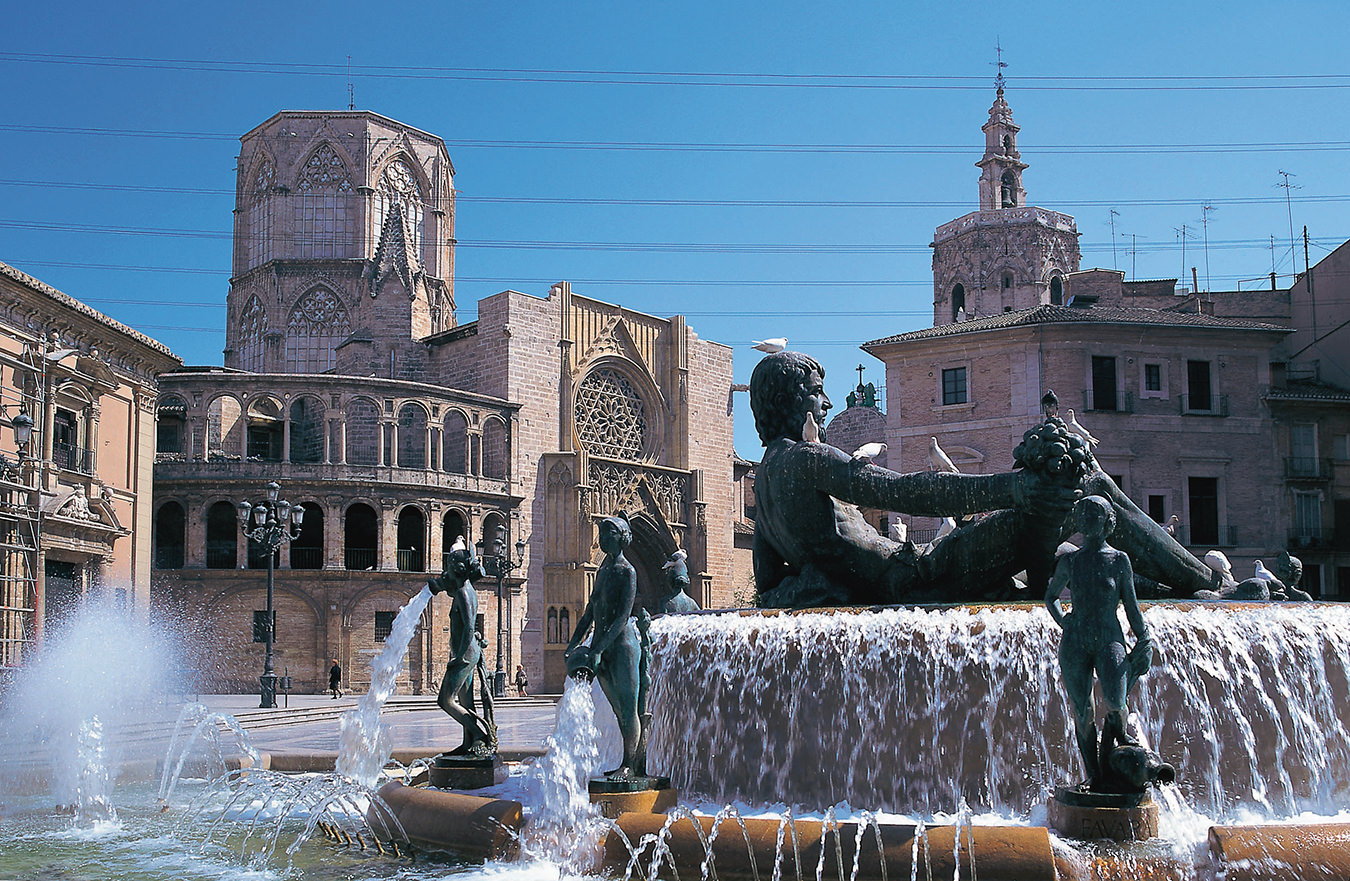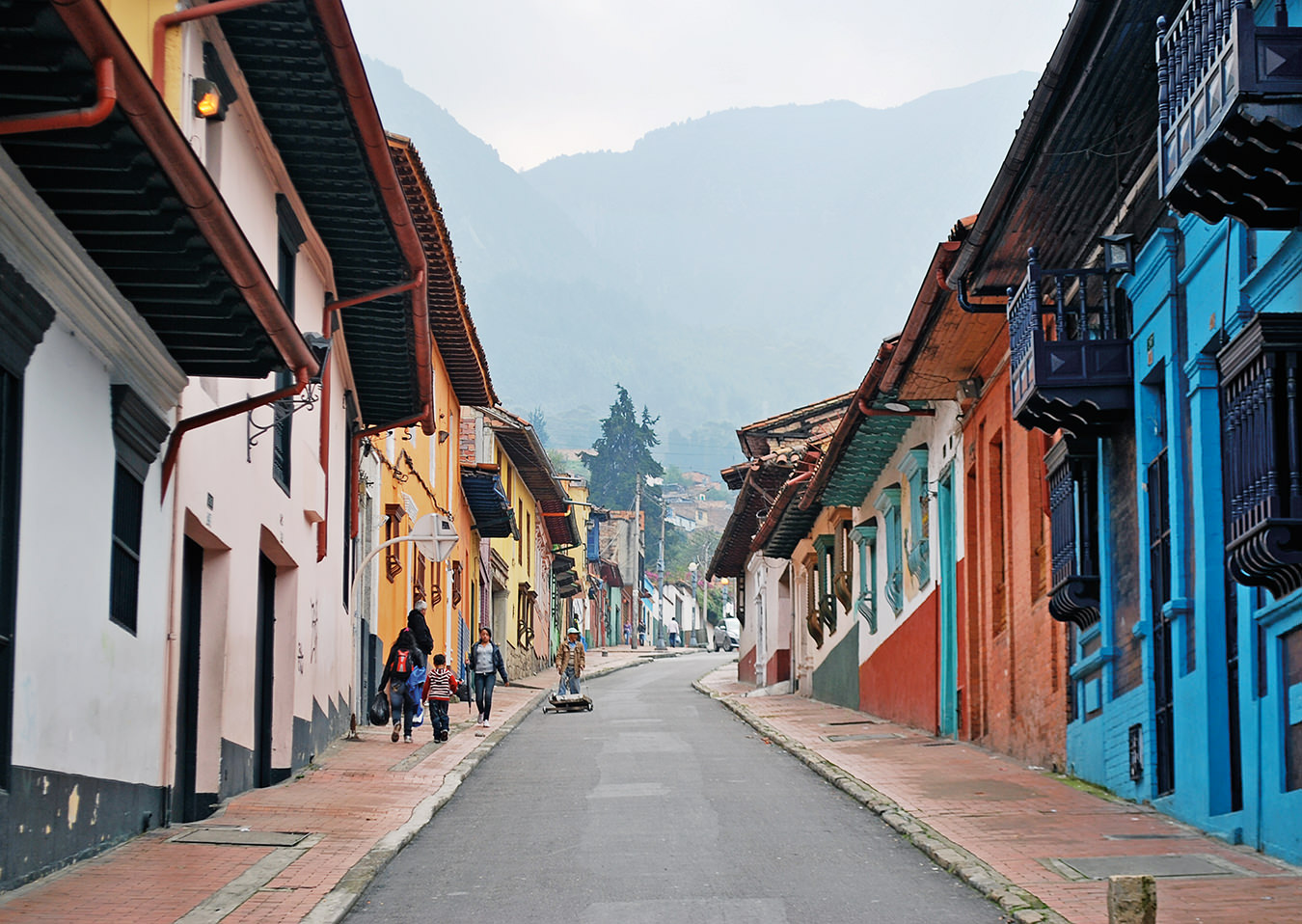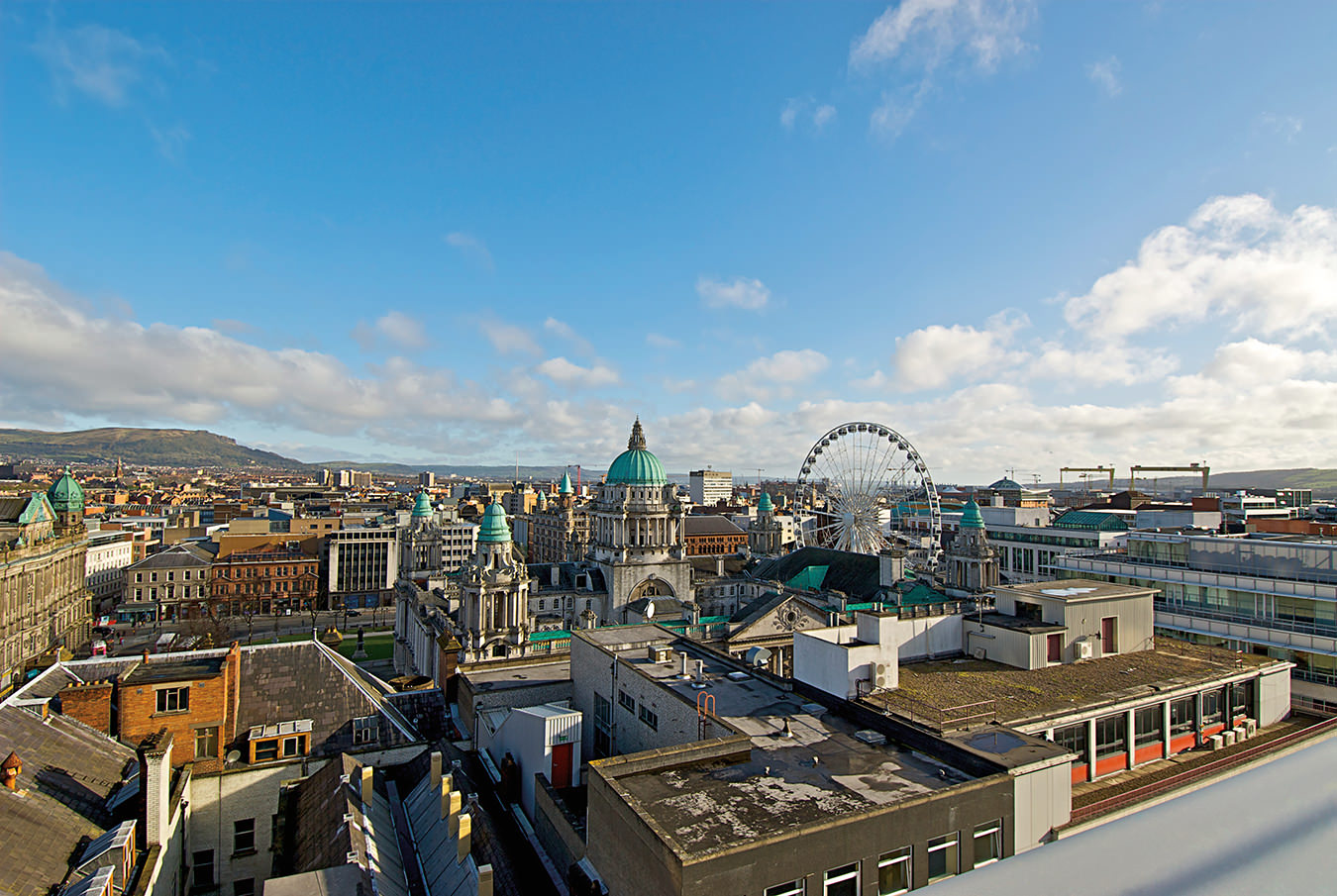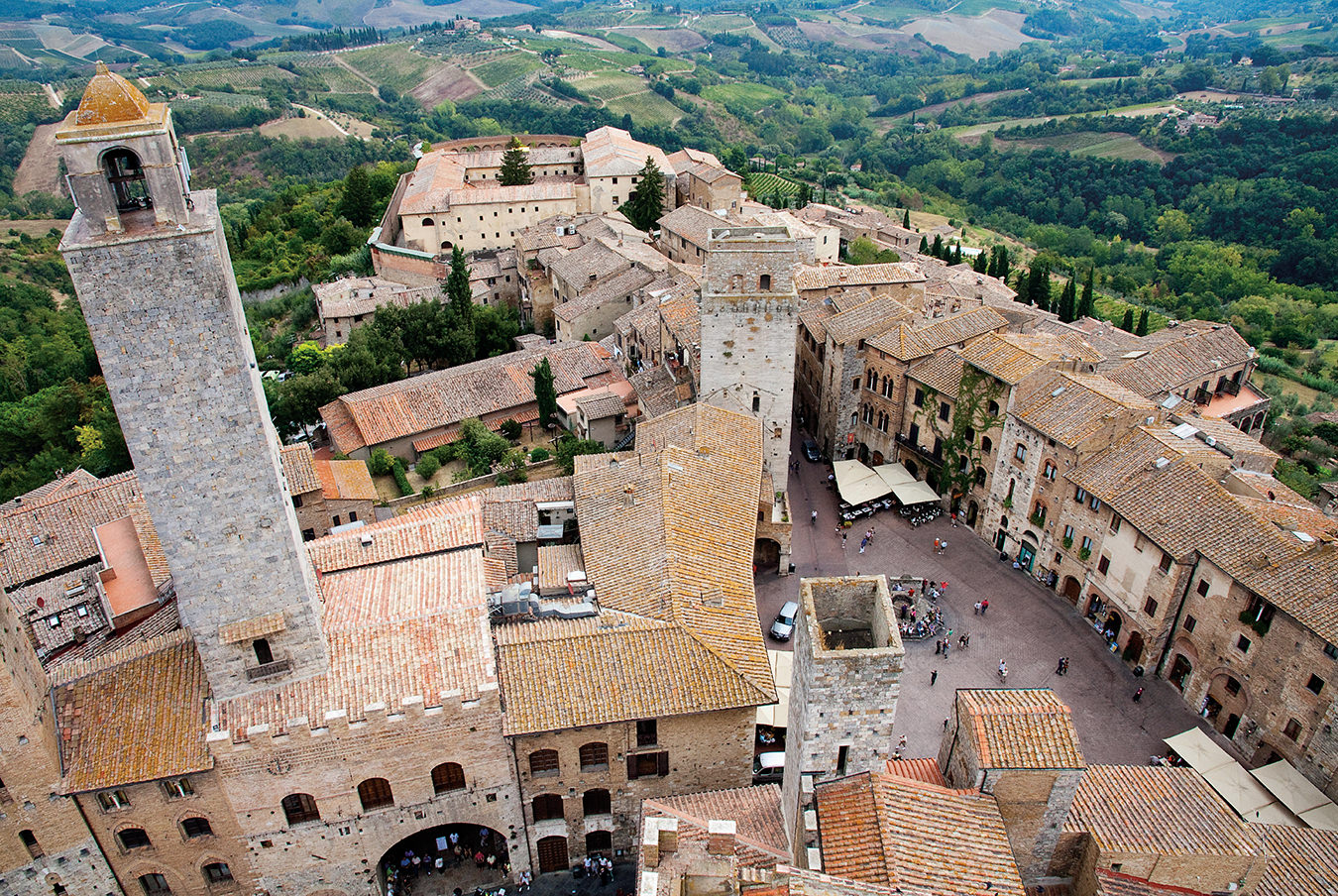-
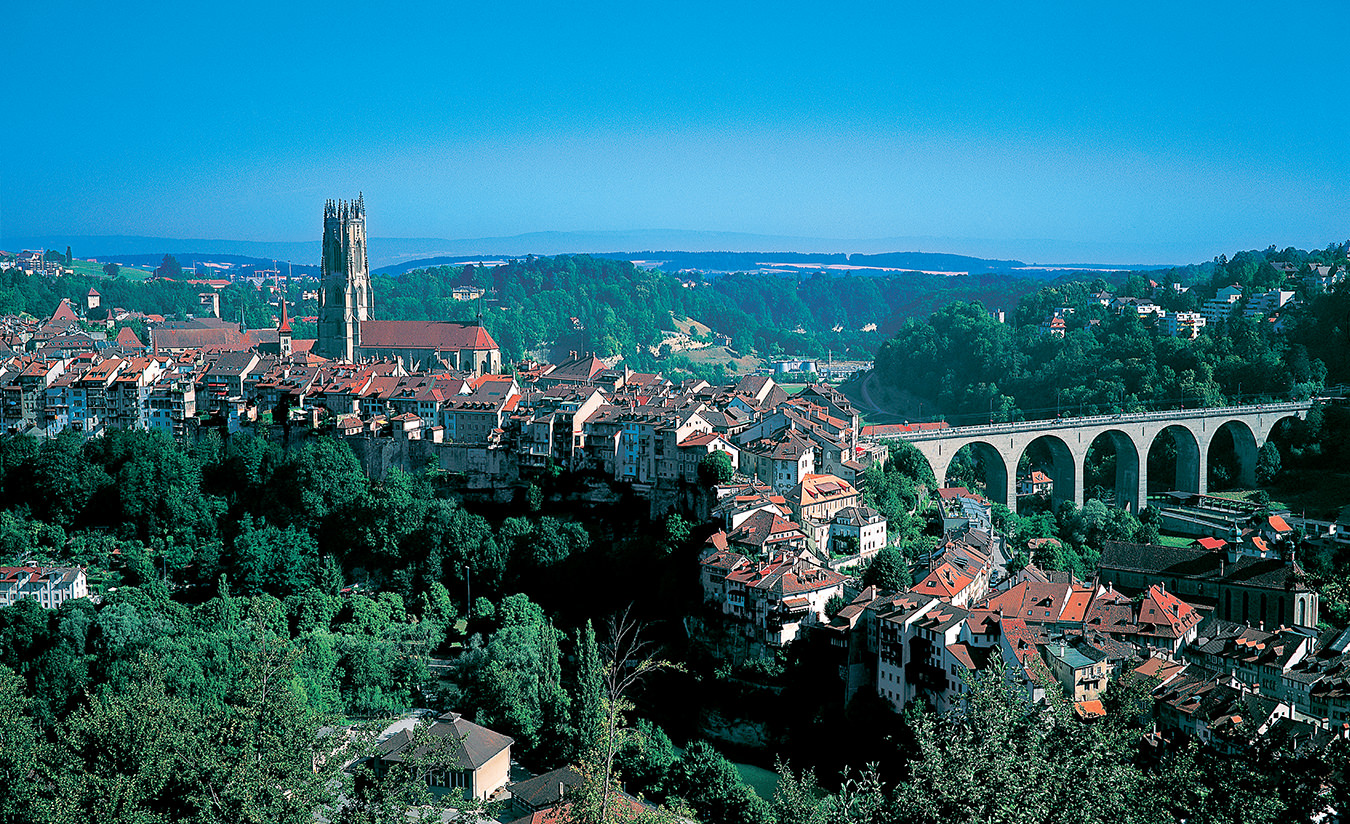
Switzerland’s medieval town of Fribourg. Photo by Stephan Englar, provided by Tourism Switzerland.
-
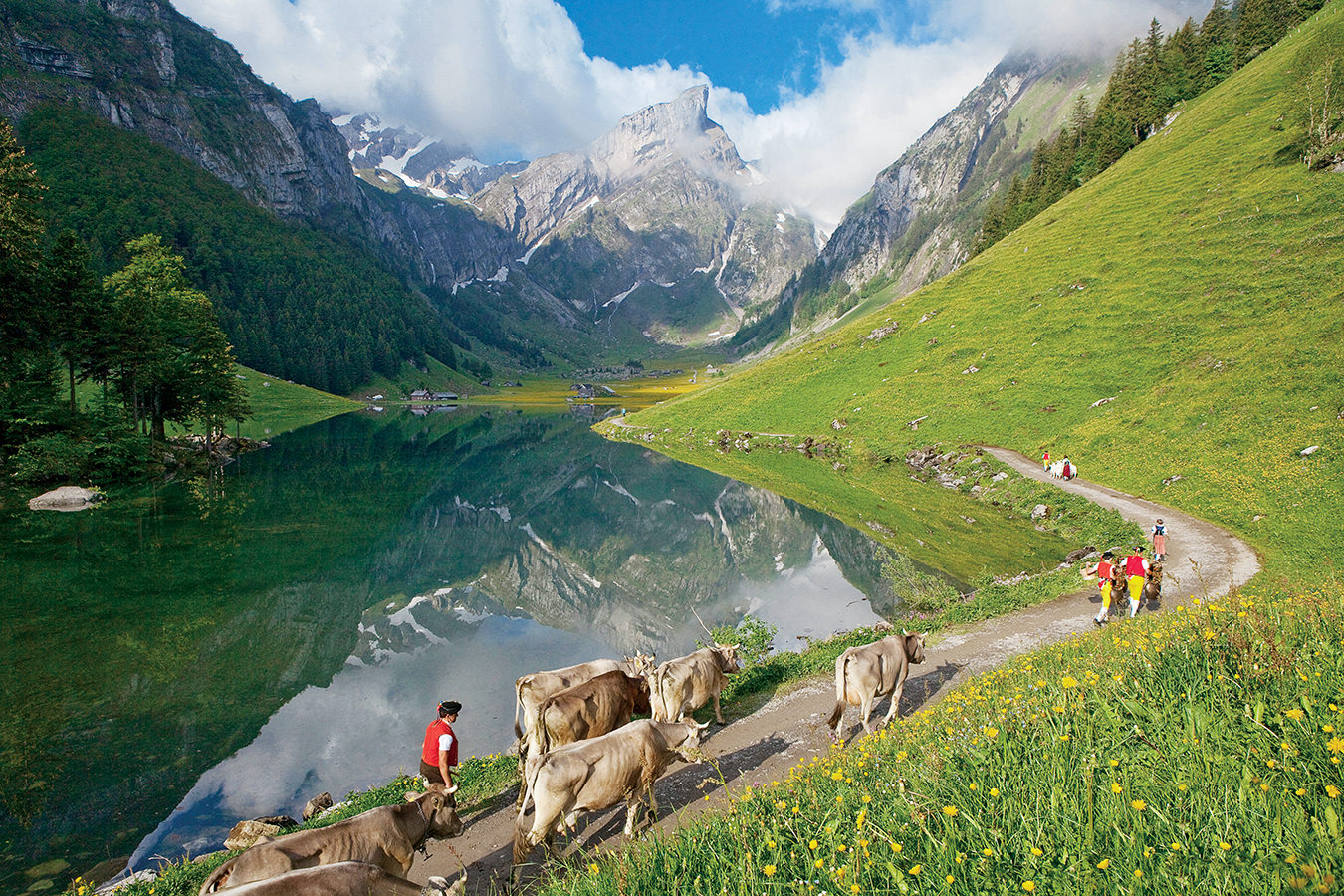
The Alpine herdsmen of Appenzell during a cattle procession to summer pasture. Photo by Christoph Sonderegger,
-
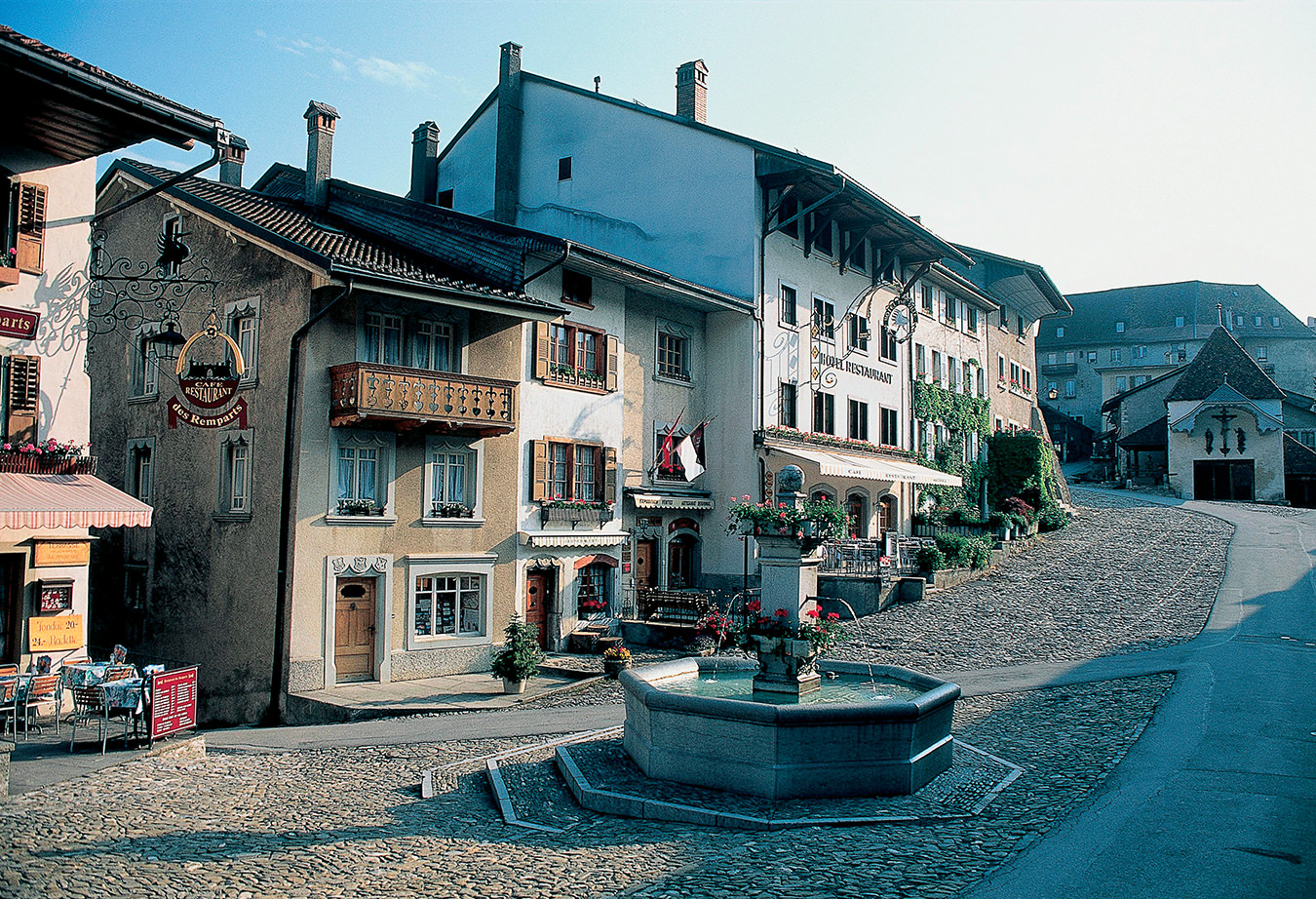
Switzerland’s medieval town of Gruyères. Photo by Roland Gerth, provided by Tourism Switzerland.
-
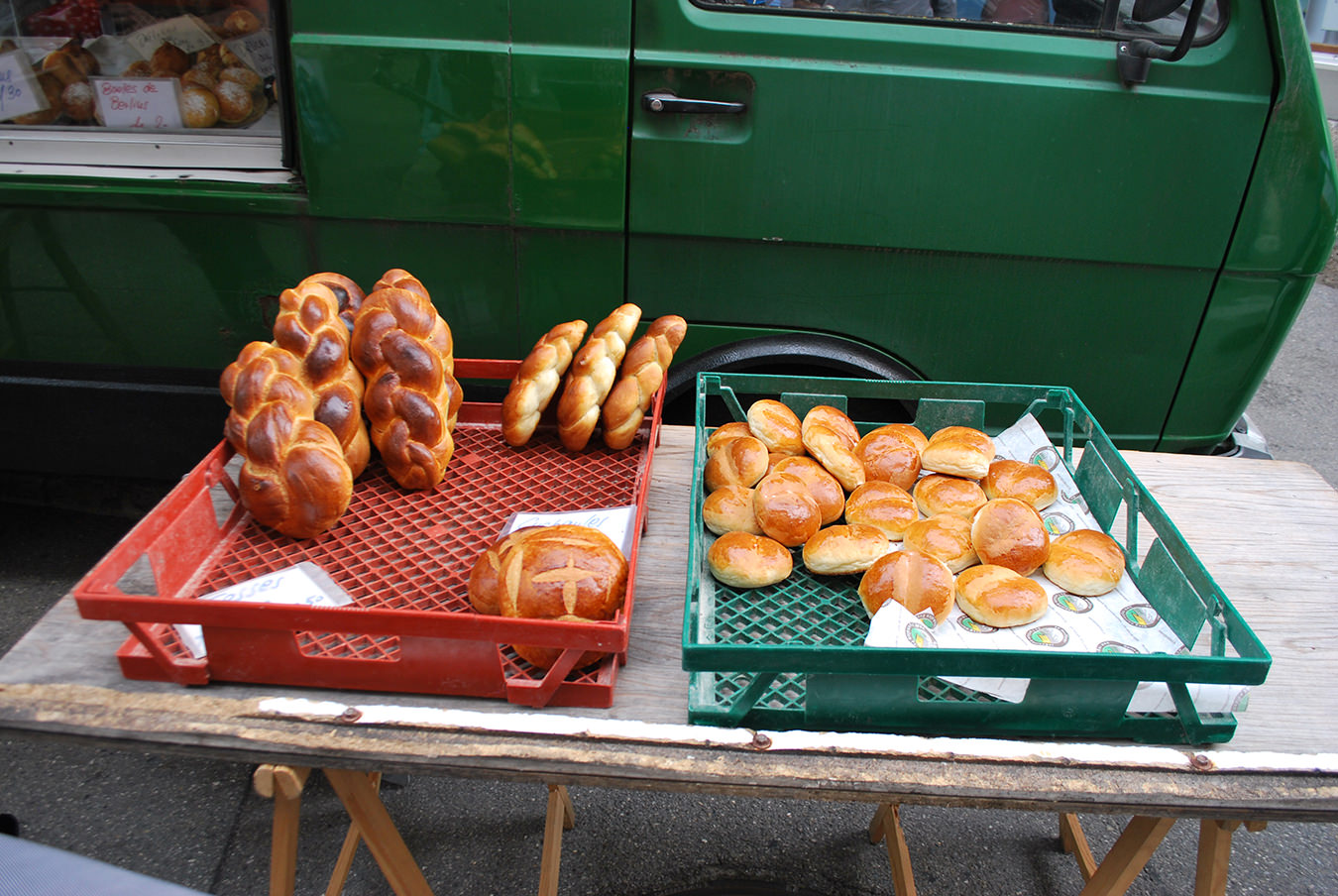
Baked goods for sale at the Fribourg street market. Photo by Katie Nanton.
-
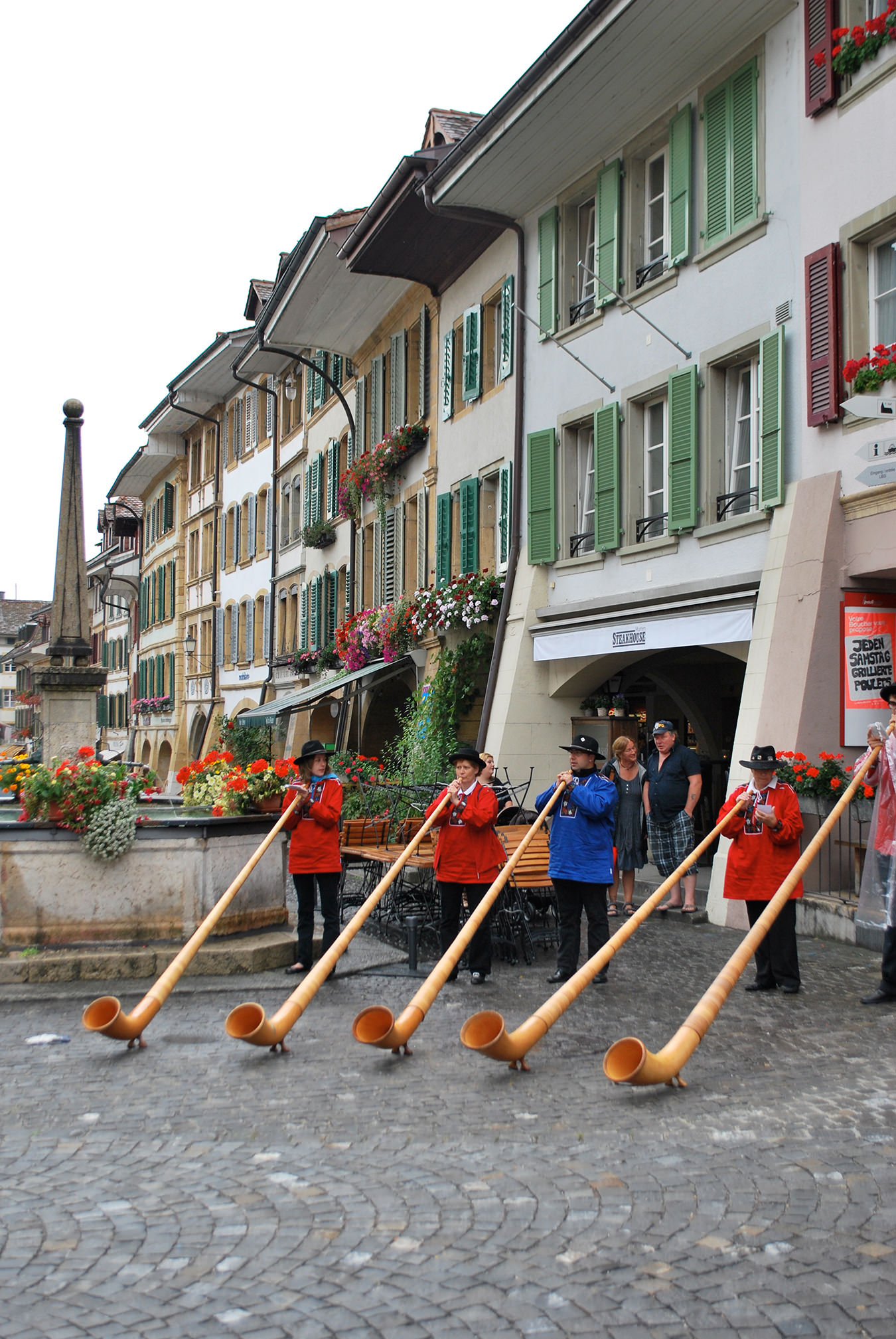
Playing the alphorn is a Swiss musical tradition. Photo by Katie Nanton.
-
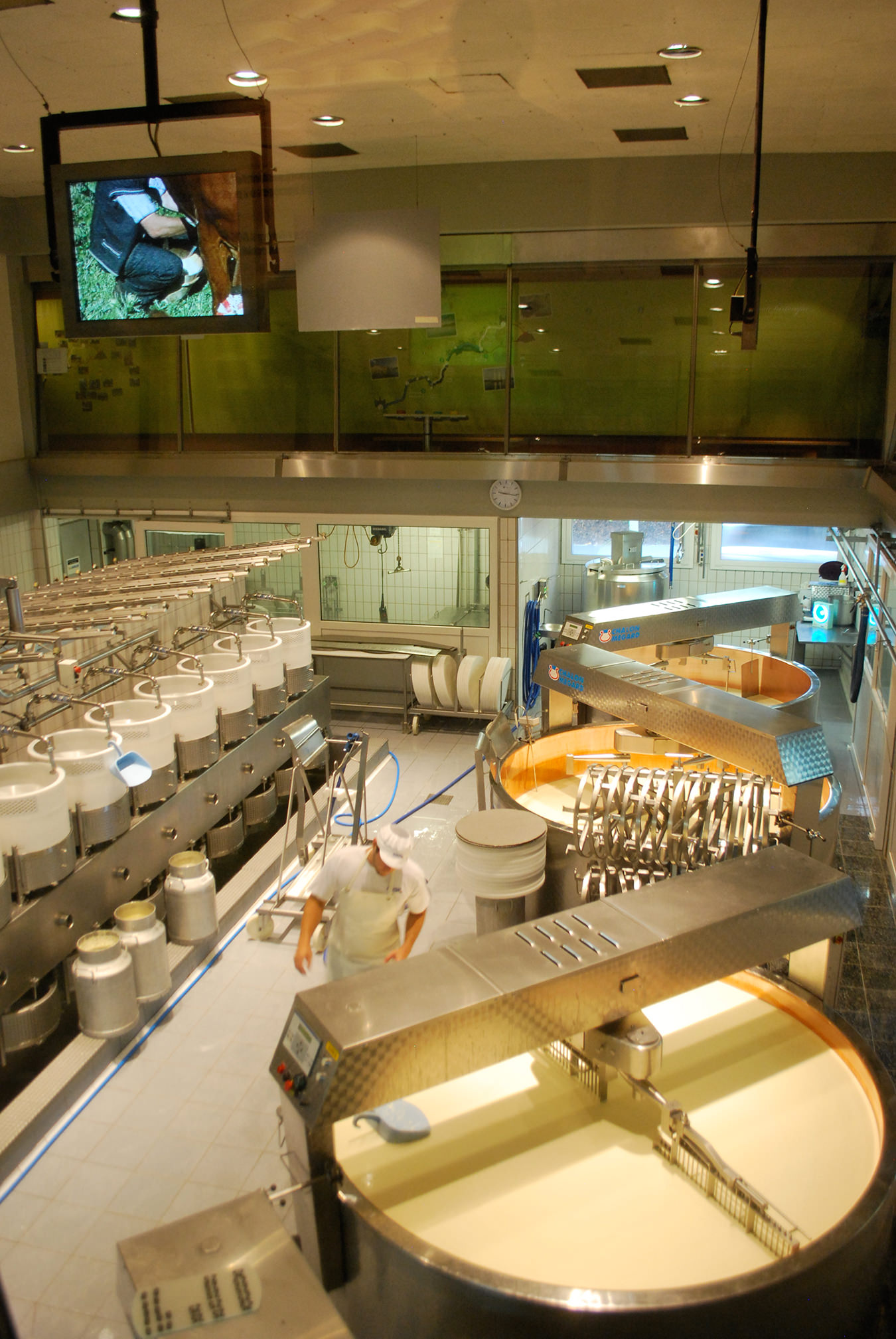
Le Gruyère AOC cheese production. Photo by Katie Nanton.
-
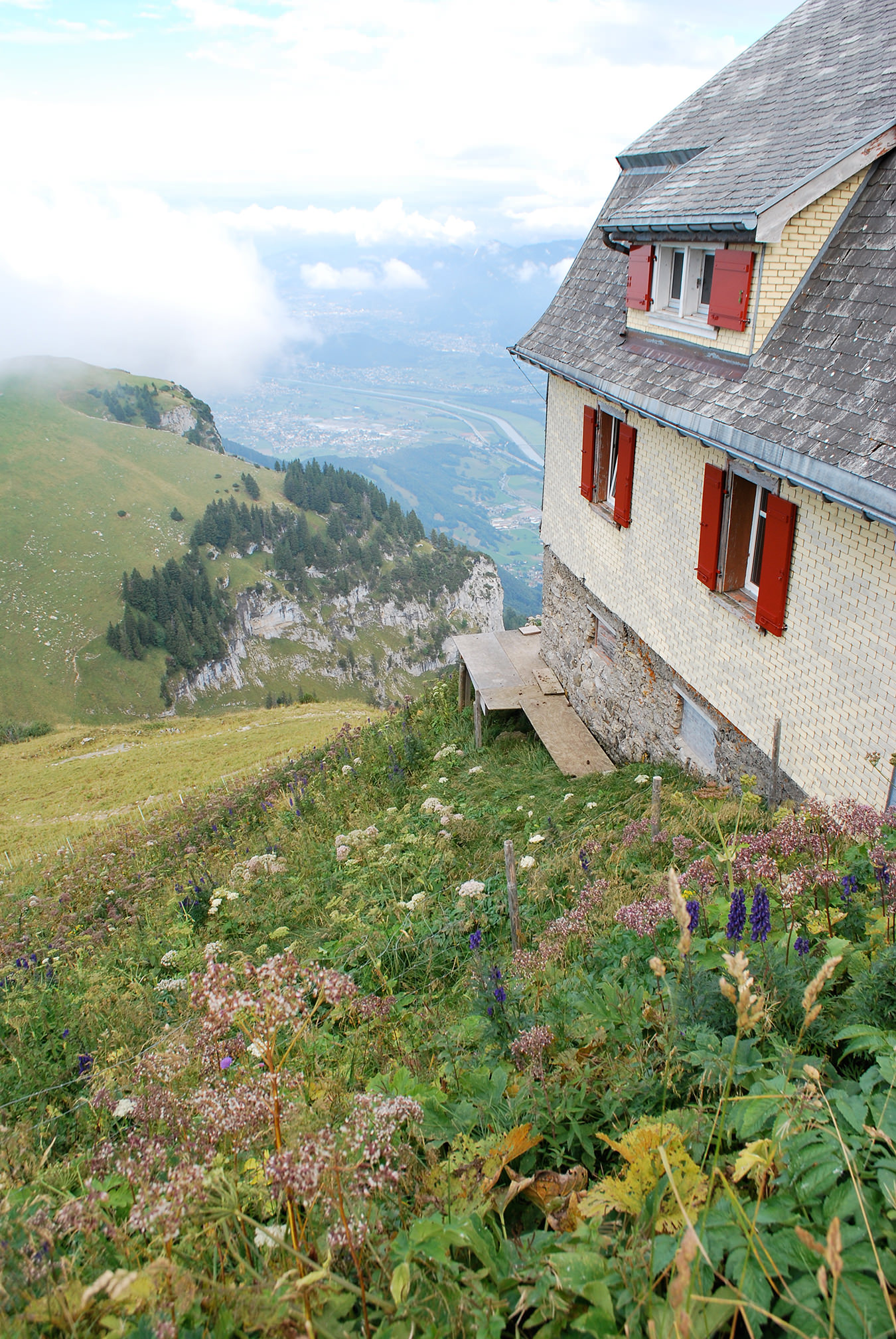
At the top of the Hoher Kasten cable car, just south of Appenzell, lies a view over three countries: Austria, Switzerland, and Germany. Photo by Katie Nanton.
-
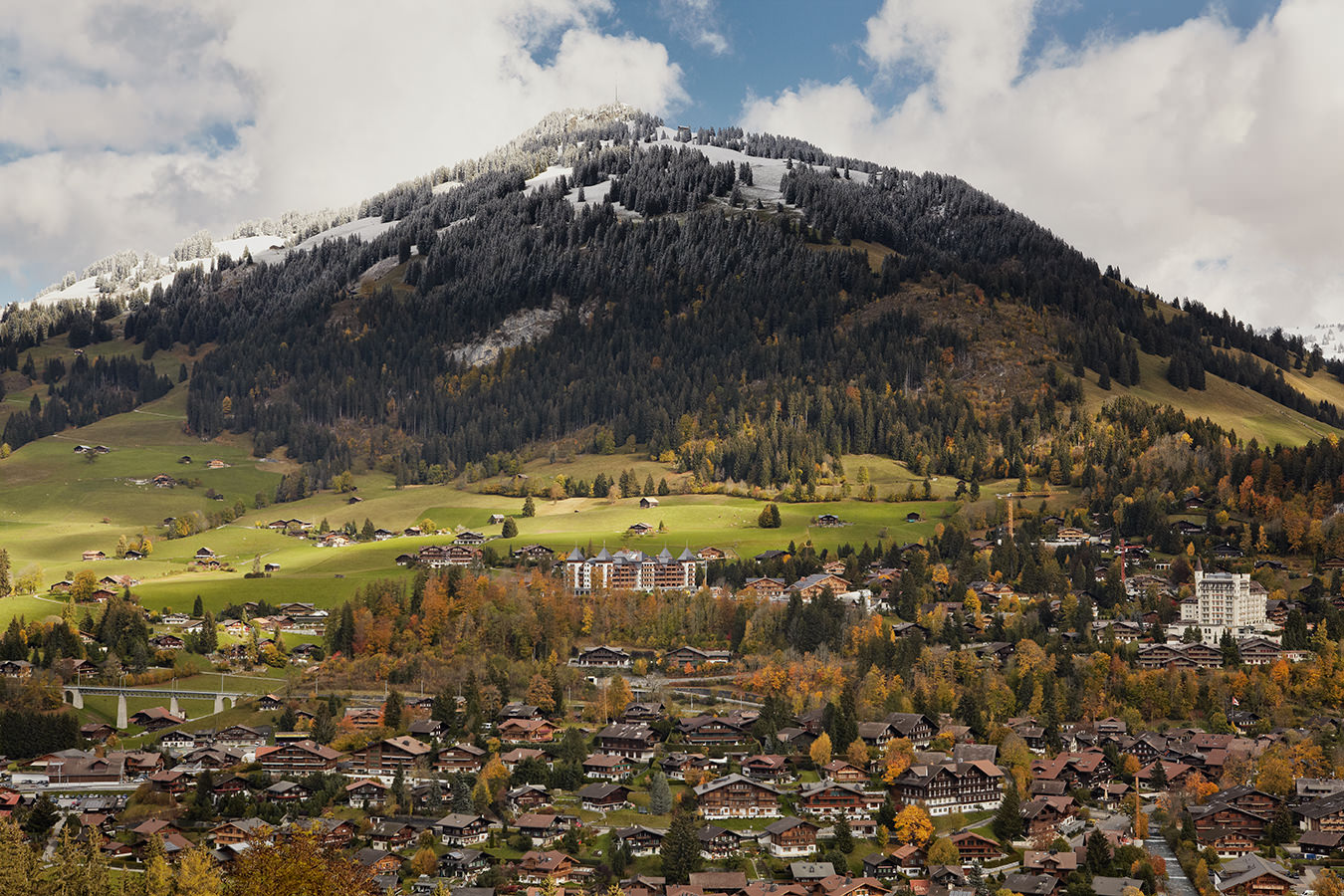
Gstaad is one of Switzerland’s most popular resort villages. Photo provided by Tourism Switzerland.
-
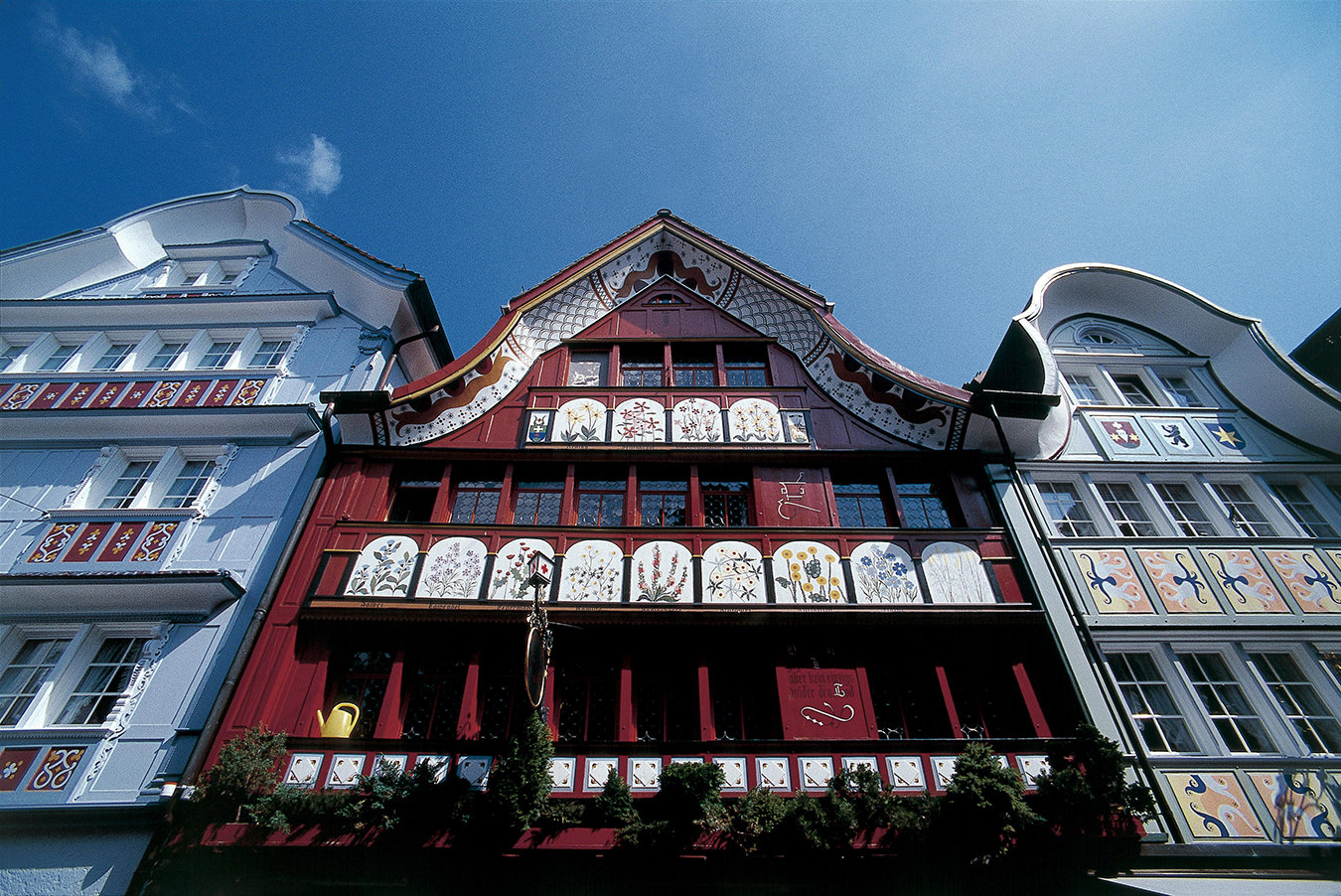
Typical chalet-style houses of the Appenzell region in eastern Switzerland. Photo by Renato Bagattini, provided by Switzerland Tourism.
-
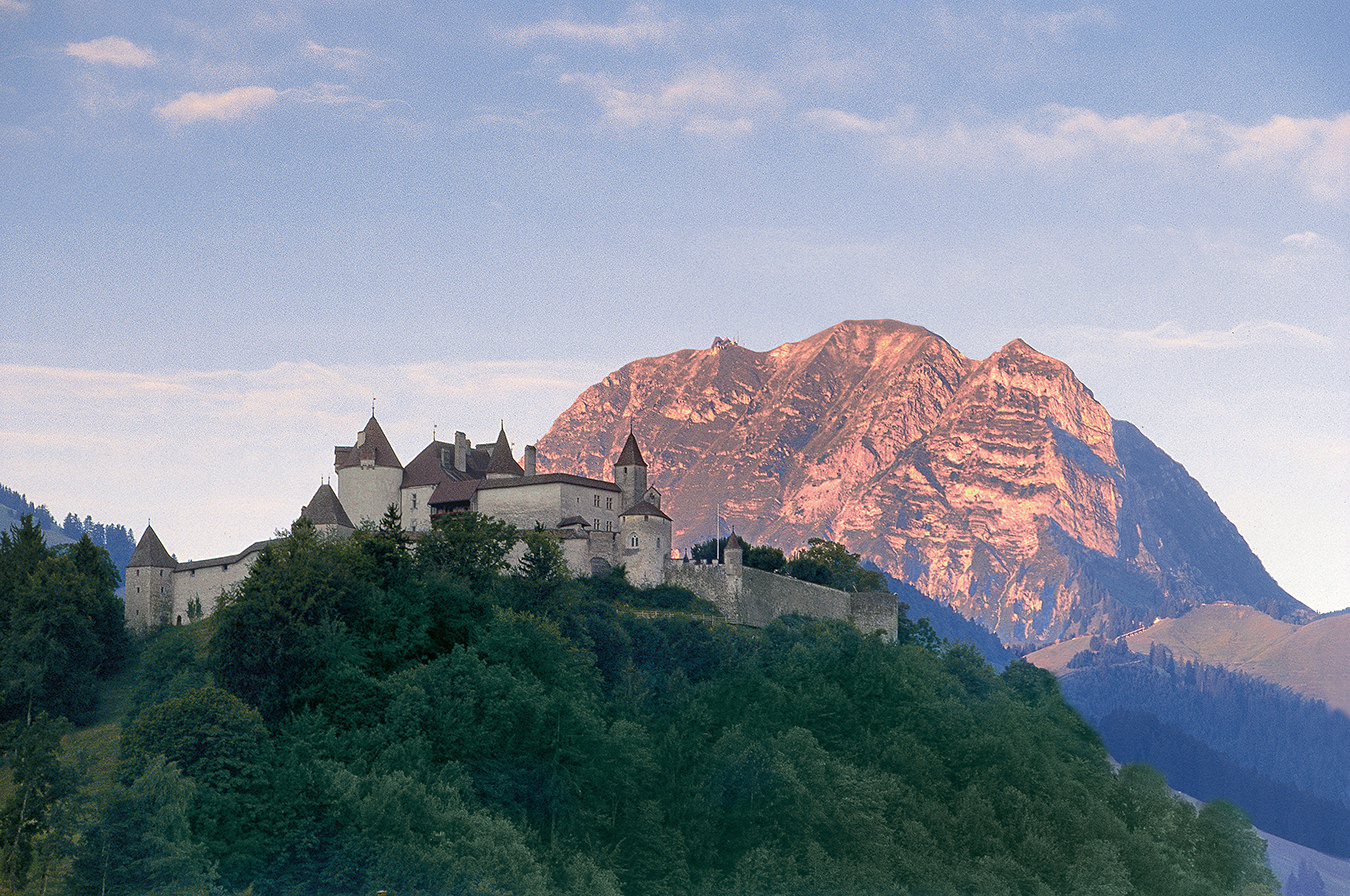
Gruyères Castle with Moléson mountain in the background. Photo by Roland Gerth, provided by Switzerland Tourism.
-
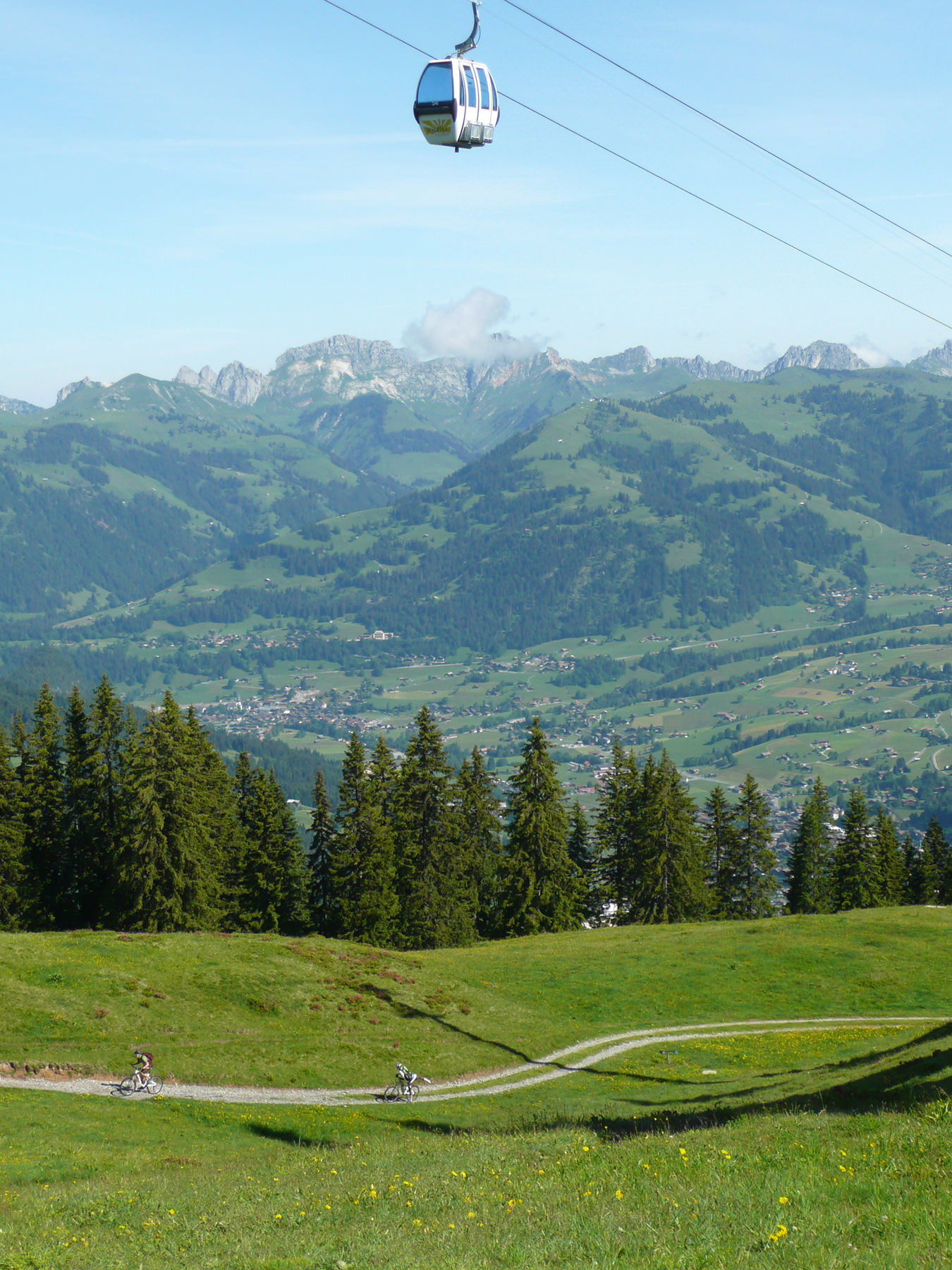
One of the best ways to view the Swiss terrain is from above, by gondola. Photo provided by Tourism Switzerland.
-

A view over Fribourg. Photo by Katie Nanton.
Slowing Down in Switzerland
Alpine adjustments.

Switzerland’s medieval town of Fribourg. Photo by Stephan Englar, provided by Tourism Switzerland.
Ask any resident of Switzerland about the railway and they’ll most likely make a case for it being Europe’s top set of tracks. “Swiss trains never even go on strike,” they’ll probably say, and an Italian in the background might pipe up with an extension of the theory: “Whenever a train in Italy is on time, it’s coming from Switzerland.”

The Alpine herdsmen of Appenzell during a cattle procession to summer pasture. Photo by Christoph Sonderegger,
Still, timeliness is nothing if time cannot be savoured. And so it must be, from Geneva to Zurich, Basel to Bern, because getting around this land of milk and money is an exercise in unparalleled efficiency throughout all of its 41,285 square kilometres. I’m noticing this first-hand disembarking at the sun-drenched train station in Fribourg, a smooth three hour ride west of Zurich, on the very minute of my quoted arrival time. Outside, a well-dressed woman walks a Weimaraner with such an air of nobility that, for a moment, I forget I’m in a college town. Ten thousand students (a quarter of the city’s population) live here at any given time, studying in the ancient halls of Europe’s only French-German bilingual university, the University of Fribourg.
The campus is set against a background worth picking up new languages to spend time in. Fribourg flanks the Sarine river with a set of steep cliffs slicing through the city core, which were used for protection during its medieval days. Today the bluffs serve as lookout points over postcard-worthy views, which are the city’s star attraction along with Fribourg’s Old Town, one of the country’s best preserved, with stone structures dating to the 11th century.
On a warm Friday afternoon, the streets spill with wine-sipping workers (the Cheyres district produces some venerable vintages) on open-air patios with a backdrop of majestic Bourguillon Gate, a major European architectural monument that has gracefully survived modernity. Picking my way down from the oldest area of town through unmarked, winding streets, I gravitate toward La Motta, the outdoor public swimming pool, situated by the river in the valley below. The Prealps mountain range rests in the hazy distance and I lapse into slow motion, making like the local Fribourgeois and swimming a few unhurried laps before lying down across the thick stretches of poolside grass.

Switzerland’s medieval town of Gruyères. Photo by Roland Gerth, provided by Tourism Switzerland.
Time slows down in Fribourg and reminders for people to do so, too, are everywhere. Inside St. Nicholas Cathedral, which took over 200 years to build, I follow the light upwards to take in one of Switzerland’s largest collections of religious stained glass, hand-painted by Polish artist Józef Mehoffer over a period of 40 years. Each of the lustrous art nouveau panels preaches a story, and their beauty remains staid as the world has changed around them.

Le Gruyère AOC cheese production. Photo by Katie Nanton.
Farther down the cobblestone street, the slow-food movement is personified at the outdoor market, where cardboard boxes of fresh beans and berries are sold alongside jars of the sweet-and-sour regional specialty, Bénichon mustard; it is traditionally eaten with the local cuchaule, a brioche-like saffron bread. Fondue is famed in these parts and fine dining is likewise relished in Fribourg, which borders the Grandfey Viaduct that bridges the Swiss-French (of the Gruyère cheese makers) and Swiss-German (of the Emmenthal) regions. Both varieties of cheese, along with the buttery Vacherin Fribourgeois, are on the menu at Fribourg’s Pinte des Trois Canards, a resto-tavern sandwiched in a gully between pine-covered mountains.
A glimpse inside its country kitchen reveals slow-cooking components—a pallet of eggs, bowls overflowing with fresh peas, and river trout fillets—that will soon be chopped, whipped, flambéed, and fried into classic regional dishes with Swiss-German flair. In the bustling dining room, servers navigate between candlelit tables while occasionally strolling across the street to fetch wine from the cellar that hides behind a hobbit-hole-like doorway cut into the mountainside.
Fribourg flanks the Sarine river with a set of steep cliffs slicing through the city core, which were used for protection during its medieval days.
Not an hour away by train from Fribourg is the French-speaking town of Gruyères—the addition of an s on the end distinguishes it from the eponymous cheese. The art of aging its mild, creamy Le Gruyère AOC fromage is a decadent study in patience, and the industry is regulated with the precision of a Swiss watch. The ultramodern visitor’s centre will inform you that only 170 regional dairies make up the trademark AOC region, and an interactive exhibition details the village’s refined version of Cheese Production 101. Stop and smell the cows’ favourite pasture foliage (thyme, cumin, violets), and then learn about the importance of terroir before reading up on industry stats. (“It takes 400 litres of milk to make one 35 kilogram round of Gruyère.”) Behind a picture window there’s a glimpse into a cavernous cheese cave, where hundreds of roundels age at rest.

At the top of the Hoher Kasten cable car, just south of Appenzell, lies a view over three countries: Austria, Switzerland, and Germany. Photo by Katie Nanton.
The town of Gruyères teems with medieval antiquity and its ancient castle is especially well preserved, probably because residents lived there up until 1938. Where old torture chambers once existed inside its damp stone walls, bunkers were built in the Second World War. (Today the rooms store computer servers.) The castle reveals its age in some rooms with centuries-old layers of stripped-away paint, like rings of growth on a tree trunk. A more contemporary artistic oddity also exists in historic Gruyères: the HR Giger Museum, named after the Swiss surrealist artist who conceived the creatures in the Ridley Scott film Alien. Giger was part of the team that won Academy Awards for the film’s special effects, and his golden trophy is displayed alongside models of his alien designs. The perplexing attraction is juxtaposed to the authenticity of quaint Gruyères, where the most unusual creatures seem to be the ever-present emblems of grues (cranes) carved into the city stonework (they also inspired the town’s name).
The notion of authenticity pervades Switzerland in various shades and contexts, from here in Gruyères across to the eastern Appenzell region. The smallest of the country’s 26 semi-independent cantons, Appenzell is home to more than 8,000 cows, double the human population. While I’m en route, a vista set to fast-forward flickers by my train window: acres of farmland cut with roads connect like dots the traditional chalet-style homes with expansive balconies and gabled roofs.
The locals have preserved past ways of life though colourful costume, dance, lacework, and embroidery, as well as still-practised customs like the ascent of the cattle to high Alpine pastures at the end of May and their descent to the valley in the fall. Tradition comes alive through yodelling, and the call of the alphorn, which is still used in the hills as a form of alp-to-alp communiqué. With Appenzell’s streets cradled by low-lying mountain fields, there is a tangible sense that this, here, is the heartland of Swiss tradition.

Visiting the western Bernese Oberland region after experiencing the hamlet-like towns results in a slight culture shock. In tidy Gstaad, the main street’s chic, chalet-style Louis Vuitton boutique typifies its modernized Alpine spirit. The glitzy village’s surrounding peaks and valleys are packed with international skiers in the winter and hikers in the summer months, and its brilliant slogan says it all: “Gstaad—come up, slow down.”
At one chalet-turned-hotel, Hotel Olden, flowers spill over the window boxes of its wooden edifice, painted with numbers dating the building to 1899. It is co-owned by Bernie Ecclestone, the president of one of the speediest companies around, Formula One. A black Ferrari with specialty plates parked beside the entrance is a possible giveaway of the boss in town. It wouldn’t be a surprise, really. Everyone needs to slow down sometimes.

